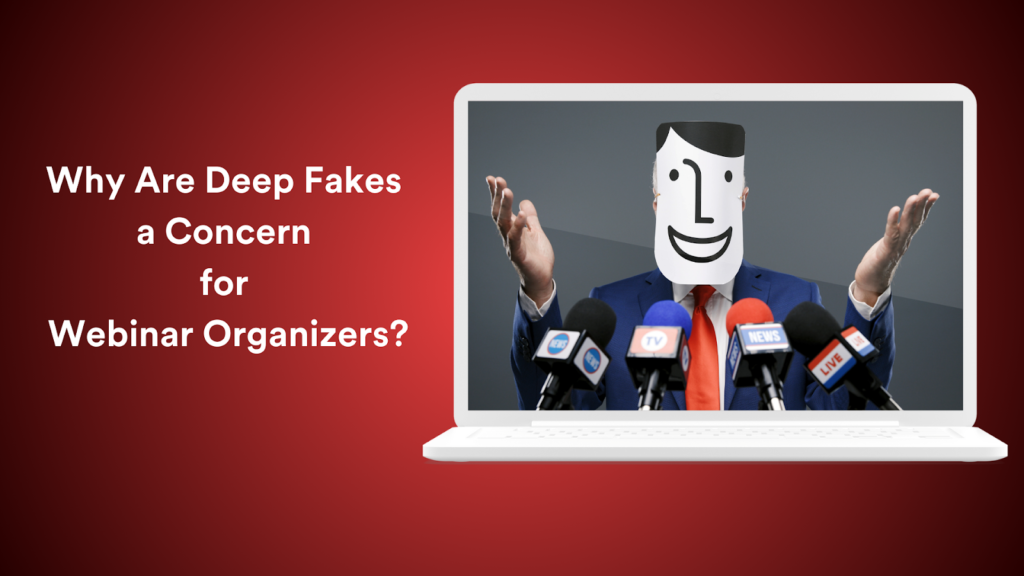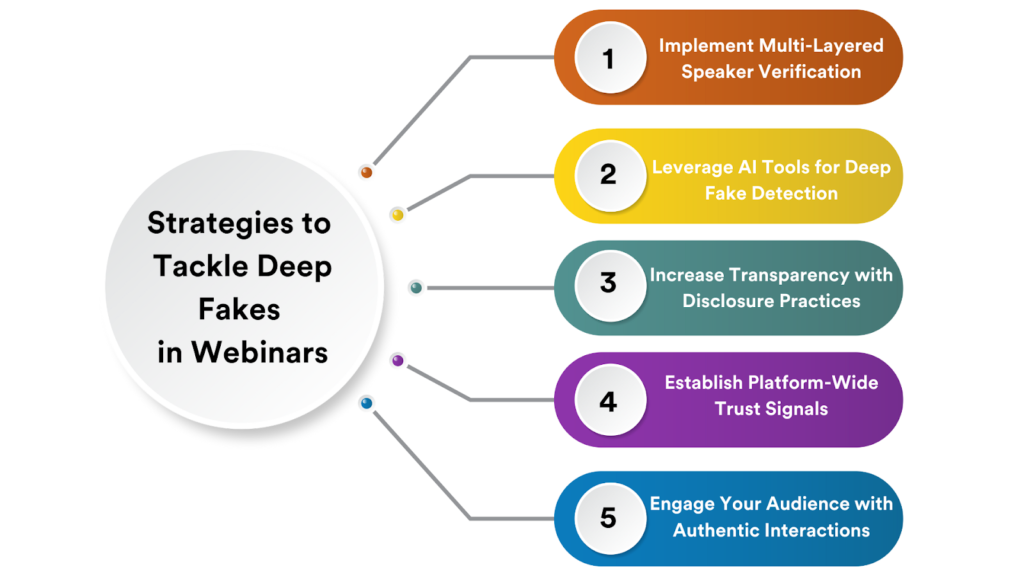For B2B marketing teams in upper SMBs, maintaining authenticity is paramount. Trust isn’t just a nice-to-have; it’s a competitive advantage, especially in virtual event spaces where attendees expect genuine interactions with credible speakers.
This blog explores practical ways to tackle deep fakes and ensure that your audience trusts what they see on your platform. At Airmeet, we’re committed to enabling seamless, transparent virtual experiences that prioritize attendee confidence.
Why Are Deep Fakes a Concern for Webinar Organizers?

Deep fakes, which use AI to create realistic avatars or manipulate audio and video content, have quickly transitioned from novelty to potential threat. For marketers, deep fakes can have several ramifications:
- Loss of Brand Credibility: If attendees suspect—or discover—that a speaker was an AI, it can harm their trust in the event and the organizer.
- Legal and Ethical Implications: Using a deep fake without consent can lead to legal troubles and damage relationships with speakers and attendees alike.
- Audience Retention Issues: Trust is crucial for B2B engagement, especially for repeat attendance. Deep fakes can create skepticism, ultimately affecting audience retention.
Strategies to Tackle Deep Fakes in Webinars

There are several ways one can verify the profile of their speakers and fortunately, virtual event platforms now-a-days also incorporate several features to help webinar organizers combat deep fakes and ensure authenticity.
Here are top strategies that webinar organizers should consider:
1. Implement Multi-Layered Speaker Verification
One of the simplest yet most effective ways to avoid deep fakes is through a robust speaker verification process. By verifying speakers at multiple levels, we can guarantee that they are who they claim to be. Here’s how this works:
- Email Verification: Confirm that the email belongs to the speaker and is authentic.
- Social Media Handles and Verified Accounts: Link speakers’ verified accounts to the event profile. For instance, Airmeet offers an option to display verified Twitter or LinkedIn handles that assure attendees of the speaker’s legitimacy.
- Real-Time Identity Verification: During onboarding, speakers can perform a quick check—like holding up an object (e.g., a mirror or specific gestures) on camera—to confirm their presence. This additional layer builds confidence in their authenticity.
Airmeet’s Take: Airmeet’s platform offers an onboarding workflow that helps organizers authenticate speakers without interrupting the flow of the event, making verification seamless and reliable.
2. Leverage AI Tools for Deep Fake Detection
Integrating advanced AI detection tools into your platform can add another level of security. These tools can detect subtle inconsistencies in gestures, facial movements, or blinking patterns—common signs of AI-generated content.
Airmeet is exploring partnerships with cutting-edge AI providers to enable in-session verification, ensuring that attendees can trust the presence of real, authentic speakers.
3.Increase Transparency with Disclosure Practices
Transparency is key in B2B marketing, especially in virtual events where audiences are increasingly savvy. To reassure attendees, disclose if a speaker is an AI avatar or an interactive AI, even when used ethically with the expert’s consent.
- Verified Speaker Badges: Display badges that verify a speaker’s authenticity, giving attendees confidence in the credibility of the event.
- Clear Communication in Terms and Conditions: Ensure that your terms and conditions specify if a speaker may use AI-generated content or avatars, letting attendees make an informed decision about their participation.
Airmeet’s Edge: With Airmeet’s customizable event spaces, organizers can highlight verified speakers and reassure audiences with prominent, trustworthy badges.
4. Establish Platform-Wide Trust Signals
Building trust isn’t just about detecting fakes; it’s about demonstrating transparency across the entire platform. This is particularly valuable for B2B teams focused on maintaining credibility in high-stakes engagements.
- Trusted Platform Indicators: Choose virtual event platforms that prioritize user security and offer clear verification workflows. Verified platforms help attendees feel secure that speakers and interactions are genuine.
- Certification for Recognized Platforms: By choosing a platform that’s committed to tackling deep fakes, like Airmeet, your events signal a commitment to integrity. Verified platforms often see higher engagement rates, as attendees are assured of the platform’s diligence.
5. Engage Your Audience with Authentic Interactions
As deep fakes become more sophisticated, audiences will appreciate human authenticity even more. Incorporating genuine interactions, such as Q&As, personal storytelling, and leader involvement, strengthens audience connection.
- Leader Q&As and Genuine Storytelling: Speakers who share personal stories and engage directly with attendees lend authenticity that deep fakes struggle to replicate.
- Gamification and Engagement Features: Use gamification features to reward genuine interactions.
Airmeet’s platform supports leaderboards, badges, and interactive Q&As, ensuring that audiences remain engaged with real speakers.
Elevate Your Event Experience with Airmeet
For upper SMBs in B2B, protecting authenticity in virtual events is crucial to delivering value and building trust. Airmeet’s comprehensive verification workflows, coupled with advanced security features, ensure that your audience connects with real people, not AI simulations. Our goal is to empower you to create virtual events that inspire, educate, and engage your audience without compromising on authenticity.
Ready to ensure your next event is deep fake-proof? Request a demo of Airmeet today and experience secure, transparent webinars that attendees can trust.





























